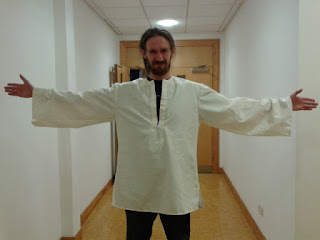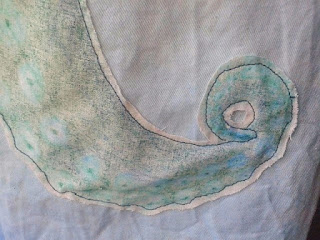I recycle most of my clothes. After they are no longer decent I wear them around the house and then use them for a number of uses but mainly for rag rugs.
Jeans follow the same life up to a point. I find it hard to reuse them.
The technique I found here: www.curbly.com works and produces rough rugs I am using in the bathroom.
For the core I have used the cheap synthetic clothes line cord they sell in the pound shops.
I have cut strips of the jeans and wrapped them around the cord. I found it easier to do the wrapping before starting to stitch. I have used pins to keep the wraps in place and used a long straight stitch to block the jean strips to the inner cord.
I have one small rug and a bigger one made of 3 circles.

















































